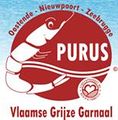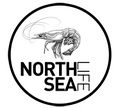Fisheries in Nieuwpoort
Contents
Overview and Background
The Belgian coast is 67 km long and is entirely bordering the province of West-Flanders (region of Flanders, Belgium). The Belgian part of the North Sea is 3,457 km2 (0.5% of the North Sea area), of which more than 1/3 or 1,430 km² are territorial sea within 12 nautical miles distance of the coastline. Belgium currently has 10 coastal municipalities and 4 coastal ports (Nieuwpoort, Oostende, Zeebrugge and Blankenberge), and besides the fish auctions located in Oostende, Zeebrugge and Nieuwpoort where fish is sold according to legal procedures, there are no other dispersed landing points. Although historically the port and auction of Oostende was by far the most important, today the auctions of Zeebrugge (53%) and Oostende (45%) receive the largest share of the landings of Belgian fisheries in Belgian ports.
Belgium has a minor role in the European fisheries context with 0.35% of the total EU production of fish. In 2012, the Belgian commercial sea fishing fleet counted 86 ships, with a total engine capacity of 49,135 kW and gross tonnage of 15,326 GT [1]. 45 vessels are part of the Small Fleet Segment (max 221 kW engine power) of which 2 use passive gear. The remaining 41 vessels belong to the Large Fleet Segment and have an engine power between 221 kW and a maximum of 1,200 kW. This fleet segment represents approximately 80% of the engine power capacity and 77% of the GT of the fleet. While a smaller number use trammel nets (passive gear) and otter trawl, the largest share of the Large Fleet Segment are beam trawl vessels (≥662 kW). The Belgian fleet is highly specialized: more than 68% of the effort(days at sea) and 77% of total landings are achieved by beam trawlers(2010)focusing primarily on flatfish species such as plaice (Pleuronectes platessa) and sole (Solea solea). The results of the reconstruction of the Belgian fleet dynamics since 1830 are presented in Lescrauwaet et al. 2013[2].
The number of days at sea per vessel is fixed at a maximum of 265 per year and in 2011 the entire fleet realized a fishing effort of 15,855 days at sea. In 2011, the Belgian fleet landed a total of 20,138t, of which 16,905t were landed in Belgian ports. Plaice is the most important species in terms of landed weight. The landings of 2011 represented a value of €76.3 million, 14% of which was marketed in foreign ports. Sole generates 47% of the current total value of fisheries in Belgium. The Belgian sea fisheries represent 0.04% of the national Gross Domestic Product [3]. The main fishing grounds in terms of volume of landings in 2010 were in descending order: North Sea South (IVc), Eastern English Channel (VIId), North Sea Central (IVb), Southeast Ireland/Celtic Sea (VIIg) Bristol Channel (VIIf) and Irish Sea (VIIa).
In terms of direct employment, 439 fishers are registered of which approximately 350 are of Belgian nationality. Direct employment in fisheries represent approximately 0.5% of the total employment in the Belgian coastal zone. Another 1040 persons work in the fish processing industry and another 5000 persons in associated trade and services [1]. A historical overview of Belgian sea fisheries is available from [4] and [2].
The Belgian sea fishery sector is rather small compared to that of neighbouring countries in the North Sea and has been gradually losing importance since the Second World War. It is also gradually losing importance relative to the booming tourism industry in the Belgian coastal zone. However fisheries can be an added value to the tourism experience at the coast by developing fisheries-related tourism activities [5]. The present case study of Nieuwpoort (Belgium) analyzes how fisheries is embedded in tourism policy of the municipality.
Port description
Nieuwpoort (Geographic coordinates: 51°7′N, 2°45′E) is a town situated at the western part of the Belgian Coast and has a population of 11.000 people. The port of Nieuwpoort is the only natural harbour of the Flemish/Belgian coast and is located at the mouth of the IJzer river. The quay walls of the fishing harbour covers an area of 400 meters and are managed by the city. Recently the city council introduced new pontoons in the fishing harbour. Those 36 meters of pontoons are especially built for the new generation polyester fishing ships. Because of the tidal forces, the ships that are moored against the quay walls move along with the tides. The movements damage the fishing ships that are made out of polyester.
The first fish auction, a wooden building, was built in 1924. In 1928, a second auction was built. During the Second World War the auction was destroyed and a new fish auction was established in 1953. In 1972 the fish auction enlarged to its current size (Beun et al. 2006). An electronic auction system was introduced in 1999 and since 2013 there is a joint auction system between the fish auction of Nieuwpoort and Oostende-Zeebrugge.
Fig 1. N58 and N93 in front of the fish auction of Nieuwpoort (Source: VLIZ, Collection Daniel Moeyaert)
Fishing fleet
In 2013 a total of 9 fishings vessels are registered in the port of Nieuwpoort from which 6 are defined as inshore fishing vessels: the N.58 Pelorus Jack, N.86 Rudy, N.34 L'Etaplois, N.93 Aalschover, N.32 Jolly Jumper, N.79 Warrior [6]. The Belgian definition of inshore fisheries ('kustvisserij') refers to vessels with an engine power of 221 kW or less (this includes any additional installed power) and a tonnage of no more than 70 GT, that make trips with a maximum period determined by the Minister (today being 48 hours) with start and end in a Belgian port. Moreover, vessels with engine power >221 kW are not allowed to fish within the 12nm which is reserved for the inshore fisheries or Small Fleet Segment (Ministerial Decree of December 16, 2005)
| Port letters and number | Vessel name | L.O.A. in m | Tonnage | Year built | Engine power (kW) |
|---|---|---|---|---|---|
| N.32 | JOLLY JUMPER | 11.78 | 21 | 2007 | 221 |
| N.34 | L'ETAPLOIS | 12.4 | 22 | 1981 | 110 |
| N.57 | SPES-NOVA | 23.75 | 99 | 1986 | 220 |
| N.58 | PELORUS JACK | 19.35 | 66 | 1986 | 221 |
| N.79 | WARRIOR | 23.82 | 70 | 1986 | 221 |
| N.86 | RUDY | 20.01 | 57 | 2006 | 220 |
| N.93 | AALSCHOVER | 21.08 | 67 | 1986 | 220 |
| N.95 | JONAS II | 12.68 | 18 | 1987 | 471 |
| N.350 | INGRID | 23.82 | 104 | 1996 | 221 |
Tabel 1: Fishing Vessels of Nieuwpoort. Inshore fishing vessels are indicated in blue.(Officiële lijst van de Belgische vissersvaartuigen (Toestand op 31 december 2013))
Quality labels
The Flemish brown shrimp is a typical fisheries product in Belgium. In 2006 the Purus label was introduced by a cooperation of ship owners, the cooperative Flemish fisheries organization (Cooperative Vlaamse Visserij Vereniging CVBA) to promote the Flemish unpeeled brown shrimps. The brown shrimps are caught by Belgian fishermen, the fishermen fish no longer than 24 hours and the shrimps are cooked in old Flemish manner (in sea water with salt), there are no additives, preservatives added. This all results in high quality taste. The Purus label also promotes sustainable fishing techniques.
Since 2011, the Flemish Shellfish- and fish cooperation (VSVC) supply, via an exclusive quality label, ‘North Sea Life’, life brown shrimps and swimming crabs to restaurants and wholesalers. Life shrimps allows chefs to determine how they will prepare the shrimps. Life product forms the base of creative and gastronomic possibilities. The same is true for life swimming crabs. In 2013 a minimum of 200 kilo life brown shrimps were landed each day. Prices for life shrimps are on average 30 percent higher than shrimps cooked on board of the shrimp vessel[7].
Overview and Background
Landings and values are available from the HiFi database from 1929 until 1999. The data from 2000-2012 that is added to the data from the HiFi database comes from the publication of Tessens and Velghe (2013)[8], the landings and values of the Belgian sea fisheries in 2012.
References
- ↑ 1.0 1.1 Roegiers, B.; Platteau, J.; Van Bogaert, T.; Van Gijseghem, D.; Bekaert, K.; De Bruyne, S.; Delbare, D.; Depestele, J.; Lescrauwaet, A.-K.; Moreau, K.; Polet, H.; Robbens, J.; Vandamme, S.; Van Hoey, G.; Verschueren, B. (2013). VIRA Visserijrapport 2012 Departement Landbouw en Visserij: Brussel. 98 pp.
- ↑ 2.0 2.1 Lescrauwaet, A.-K. (2013). Belgian fisheries: ten decades, seven seas, forty species: Historical time-series to reconstruct landings, catches, fleet and fishing areas from 1900. PhD Thesis. Ghent University (UGent): Gent. xiii, 242 pp.
- ↑ Anon. (2008). Strategische Milieubeoordeling van het Nationaal Operationeel Plan voor de Belgische visserijsector, 2007 - 2013. ILVO Visserij: Oostende. 103 pp.
- ↑ Lescrauwaet, A.-K.; Debergh, H.; Vincx, M.; Mees, J. (2010). Fishing in the past: Historical data on sea fisheries landings in Belgium. Mar. Policy 34(6): 1279-1289. dx.doi.org/10.1016/j.marpol.2010.05.006
- ↑ Anon. (2011). Europees Visserijfonds (EVF). AS 4: ontwikkelingsstrategie voor het Belgisch kustgebied. Europees Visserijfonds: [s.l.]. 33 pp.
- ↑ Anon. (2013 b). Officiële lijst van de Belgische vissersvaartuigen = Liste officielle des navires de pêche belges. Toestand op 31 December 2012. Officiële lijst van de Belgische vissersvaartuigen = Liste officièlle des navires de pêche belges. Federale Overheidsdienst Mobiliteit en Vervoer: Brussel. 28 pp.
- ↑ http://www.ilvo.vlaanderen.be/NL/Persenmedia/Allemedia/tabid/6294/articleType/ArticleView/articleId/1105/language/nl-NL/ILVO-ziet-in-rauwe-garnaal-meer-dan-lucratieve-niche.aspx#.UyBv6vldVSL
- ↑ Tessens, E.; Velghe, M. (Ed.) (2013). De Belgische zeevisserij 2012: Aanvoer en besomming: Vloot, quota, vangsten, visserijmethoden en activiteit. Dienst Zeevisserij: Oostende. 119 pp.



